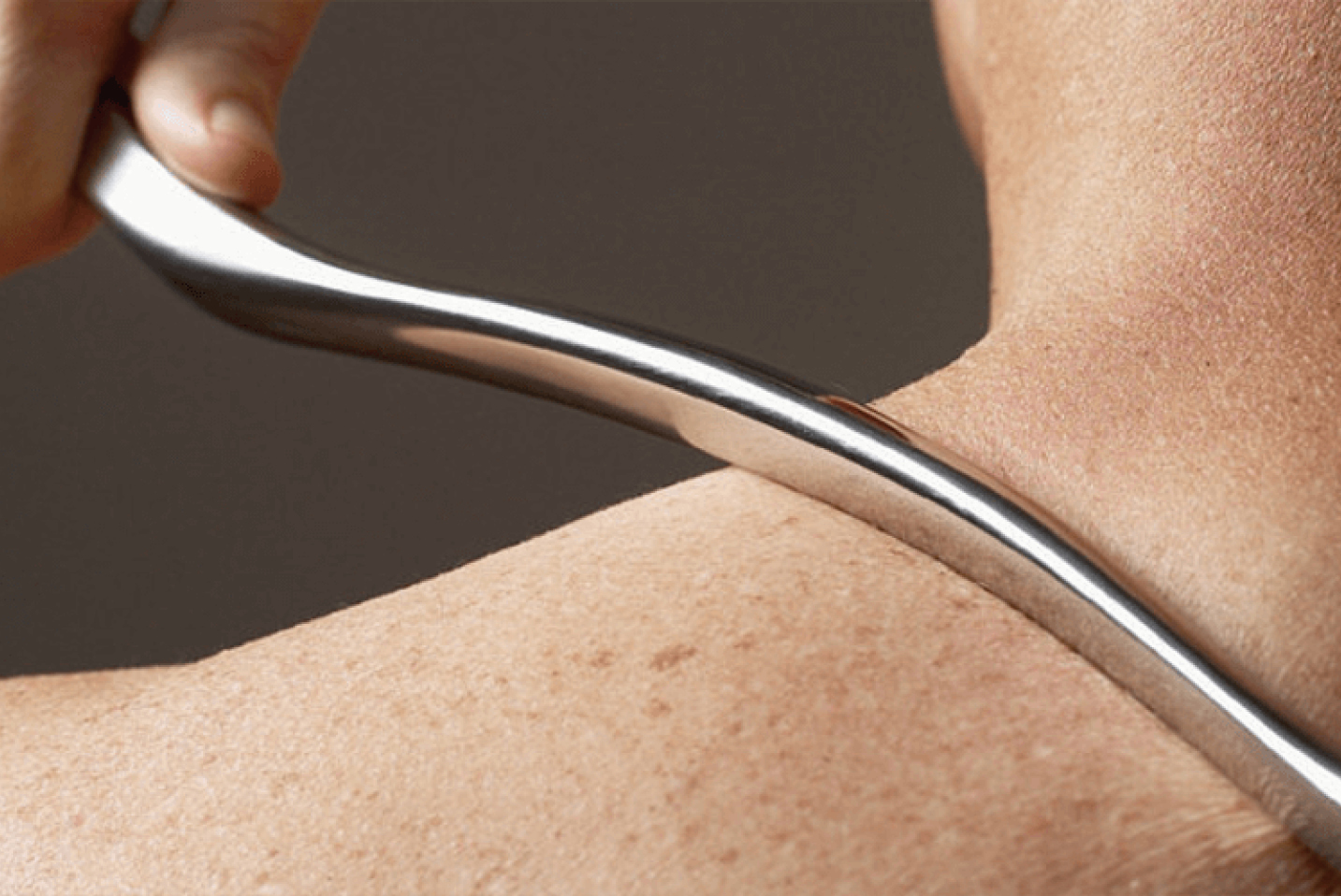
What is IASTM?
Instrument-Assisted Soft Tissue Mobilization (IASTM) can be a beneficial manual therapy treatment in physical therapy. IASTM refers to the use of a dense, non-irritating material, such as stainless steel or jade, to apply a force to soft tissue structure such as muscle or tendons for the purpose of achieving a musculoskeletal and/or neurological change.
So How Does It Work?
First, we need to understand “fascia.” Fascia is the connective tissue of our body, covering all other soft tissue structures, including muscle. When the fascia becomes “stuck,” medical professionals may refer to that as an adhesion or restriction, which can be tight, painful or both for the patient.
By utilizing IASTM tools, the clinician can determine the exact spot where the adhesion lies because it will feel crunchy or crinkly underneath. Once the precise area of restriction is identified, the clinician can target that space with the tool. Using these tools creates friction and introduces micro-trauma to the adhesion, thus breaking up muscle belly trigger points, “knots” and scar tissue alike. IASTM can also be powerful in reducing nervous system muscle tone, allowing muscles to relax. Another great benefit is that it promotes blood to the treatment area and encourage tissue remodeling, all of which help to improve mobility.
Dynamic Treatments
The use of IASTM tools allows for more diverse and dynamic treatments. Take a patient with knee pain, for example. The patient may begin with a relaxed position with their knee flexed (or bent) while IASTM treatment is applied to the quadriceps muscle and tendon. Then, the same person can be positioned with their knee in the end-range (maximally) flexed position, and the same treatment can be performed to diversify treatment and potentially identify additional restricted areas.
An even more dynamic application of IASTM combines treatment with active movement. The same patient with knee pain can hang their leg off the edge of the treatment table and slowly extend and flex their knee. While the knee is moving into flexion, IASTM tools can be applied to the quadriceps muscle and/or tendon. This application also allows for a gentler force behind the tools, which an be more comfortable the patient but just as effective.
Excel-lent Outcomes
Many of our patients have reported increased range of motion and reduced pain with IASTM. It can be an excellent supplemental treatment to go along with more traditional physical therapy. If you have any questions or are curious to find out more about this innovative treatment, stop by EXCEL Westfield today!
The medical information contained herein is provided as an information resource only, and does not substitute professional medical advice or consultation with healthcare professionals. This information is not intended to be patient education, does not create any patient-provider relationship, and should not be used as a substitute for professional diagnosis, treatment or medical advice. Please consult with your healthcare provider before making any healthcare decisions or for guidance about a specific medical condition. If you think you have a medical emergency, call your doctor or 911 immediately. IvyRehab Network, Inc. disclaims any and all responsibility, and shall have no liability, for any damages, loss, injury or liability whatsoever suffered as a result of your reliance on the information contained herein.
